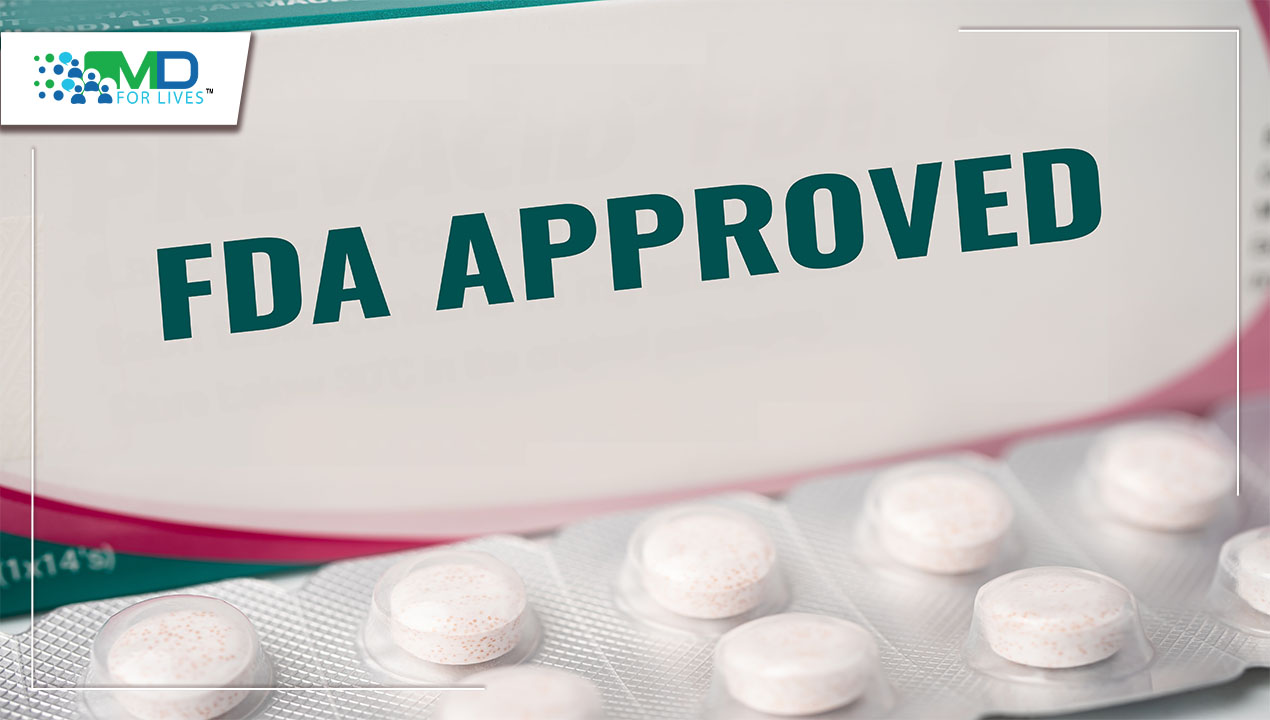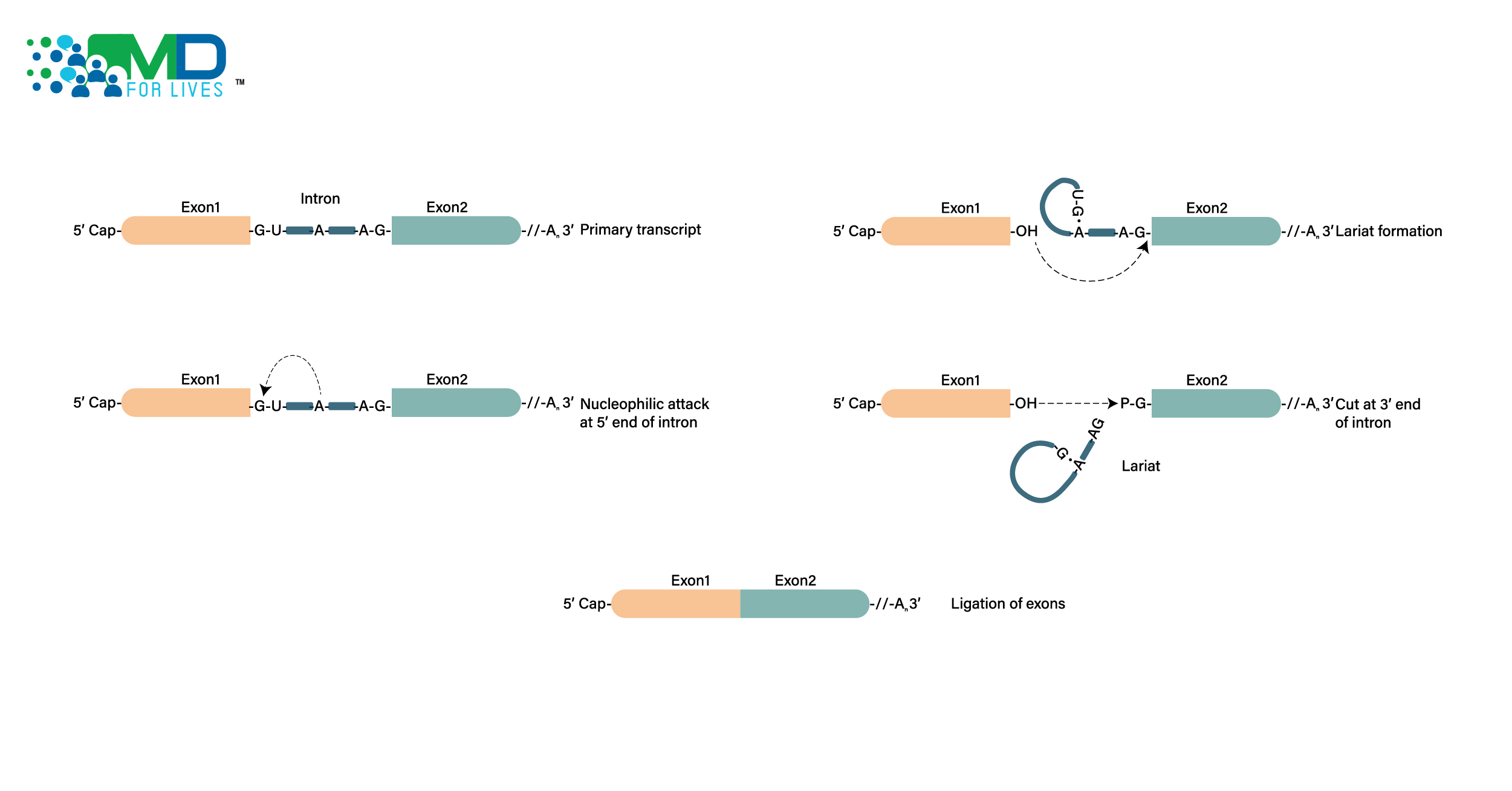Eosinophilic esophagitis (EoE) is an increasingly common inflammatory disorder in which immune cells called eosinophils infiltrate the esophagus. This can cause the esophagus to narrow and can lead to symptoms like difficulty swallowing and difficulty eating. EoE can be a tough-to-treat disease in both children and adults, and until recently, there were no FDA-approved treatments. On May 20, 2022, the US FDA approved the monoclonal antibody dupilumab (Dupixent) as a treatment for EoE in adults and in children who are at least 12 years old and weigh at least 40 kg.1 Dupilumab is already in use for several other allergic and atopic diseases.
What is Eosinophilic Esophagitis (EoE)?
EoE is an antigen-driven allergic disease triggered by a combination of exposure to environmental factors such as foods or allergens, genetic influences, and host immune factors.2,3 Atopy and familial history of EoE can also influence susceptibility to the condition. In adult EoE cases, other atopic conditions were reported in 20-80% of patients.
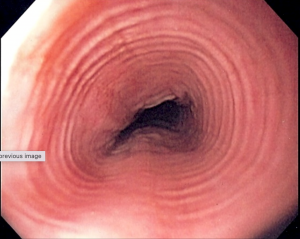
Endoscopic image showing concentric rings that can form in the esophagus in eosinophilic esophagitis. (Creative Commons image by Samir, obtained from https://en.wikipedia.org/wiki/Eosinophilic_esophagitis#/media/File:Multi_ring_esophagus.jpg)
EoE was thought to be a subset of gastroesophageal reflux disease (GERD) due to the similarities in symptoms. However, scientific discoveries during recent decades have shown that these conditions are distinct and have led to the recognition of more EoE cases in the US.
Pathophysiology and Existing Treatments for EoE
A cytokine called thymic stromal lymphopoietin (TSLP) has been implicated in EoE; this cytokine is highly expressed in esophageal tissues of EoE patients. TSLP evokes the activation of T helper cells type 2 (Th2), which release proinflammatory cytokines such as interleukins 4, 5, and 13 (IL-4, IL-5, and IL-13). In EoE, these inflammatory cascades lead to eosinophil recruitment to the esophagus.

The resulting inflammation and remodeling eventually lead to esophageal stricture and can cause complications such as dysphagia, epigastric pain, dyspepsia, chest pain, and food impaction.3,4,7 Symptoms can vary by patient age, with children reporting more non-specific complaints.
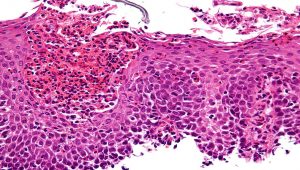
Micrograph of eosinophilic esophagitis. (Creative Commons image by Nephron, from https://en.wikipedia.org/wiki/Eosinophilic_esophagitis#/media/File:Eosinophilic_esophagitis_-_very_high_mag.jpg )
Treatment for EoE has been focused on elimination diets and the use of medications including proton pump inhibitors (PPIs) and corticosteroids. When these do not resolve patients’ dysphagia, endoscopic esophageal dilation can improve clinical symptoms and histological features of EoE.4,5 However, responsiveness to these treatments can vary among patients, and before dupilumab, no EoE-specific medication had been approved by the FDA.
Dupilumab Mechanism of Action and Clinical Trial
Dupilumab is a human monoclonal antibody that downregulates Th2-mediated inflammation by blocking the interleukin 4 (IL-4) receptor. This inhibits the IL-4 and IL-13 signaling pathways, reducing the recruitment of eosinophils.
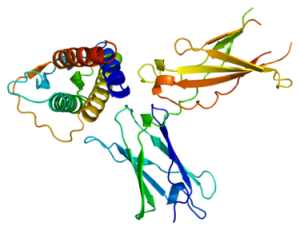
The IL-4 receptor, dupilumab’s target. (Creative Commons image by Emw, from https://en.wikipedia.org/wiki/Interleukin-4_receptor#/media/File:Protein_IL4R_PDB_1iar.png)
The clinical trial evaluating dupilumab’s efficacy and safety in EoE was conducted by Regeneron Pharmaceuticals in collaboration with Sanofi. The randomized and blinded phase 3 trial involved two separate groups of active EoE patients (parts A and B) who were administered either placebo (39 patients in part A; 79 patients in part B) or 300 mg dupilumab (42 patients in part A; 80 patients in part B) every week for 24 weeks.
The two primary outcomes were reduction of eosinophils in the esophagus at week 24 based on a pre-determined level and the change in patient-reported Dysphagia Symptom Questionnaire (DSQ) score from baseline to week 24.
At the conclusion of the trial, 59-60% of patients who received the treatment showed a reduction of eosinophils levels in the esophagus to the threshold value as compared to only 5-6% of patients receiving a placebo.1 The patients treated with dupilumab also experienced greater improvements in dysphagia symptoms, as reported in the DSQ, and these differences from placebo were deemed clinically meaningful.
Reported dupilumab side effects include nonserious injection-site erythema, nasopharyngitis, upper respiratory tract infections, joint pain, and herpes viral infections.
In general, the clinical trial data showed that dupilumab was well tolerated and was effective in reducing EoE-associated pathologies in most of the clinical trial participants. The recommended dosage for EoE patients is 300 mg given every 2 weeks. Dupilumab cost is listed at about $4,910 for two vials, which is a monthly supply.
Are you a Patient? Join thousands of patients shaping better care. Take the survey here 👉 Patient Survey

MDForLives is a vibrant community of healthcare professionals and patients dedicated to shaping the future of healthcare. We provide valuable global insights to healthcare companies through online surveys, interviews, and discussion forums.

